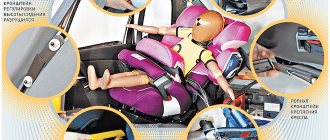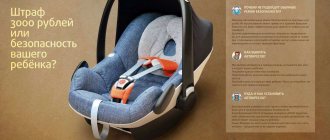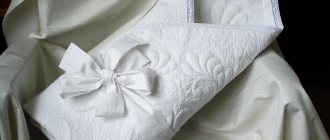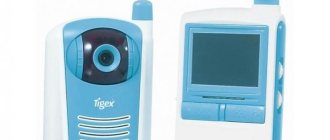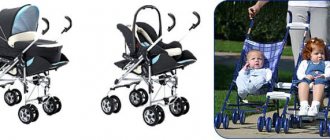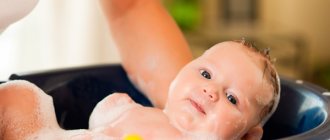Car child seats in the 15 to 36 kg category belong to group 2-3. Features of this type of holding devices:
- some models can be converted into boosters when the child grows out of the classic frame car seat;
- the size of the restraints is larger than in previous groups, as they are designed for children from 3 years old to 12;
- installed facing the windshield;
- many have the ability to be installed on an Isofix base, but you can also use standard seat belts in the car.
How to choose
The choice of a child car seat must be taken very seriously so that the child is completely safe while moving the car. Before purchasing, read the rating of the best chairs. There are several criteria by which you need to choose a product:
- Crash test ratings . Chairs receive a crash test rating based on various criteria: comfort, safety, ease of use, and the presence of harmful substances.
- Side impact protection . The seat must have adjustable side impact protection in the event of a car collision.
- Seat belts . For greater safety of the child, you should choose a device with a five-point seat belt. The length of the belt should not be short, but with a margin.
- Case. It is worth paying attention to the material of the cover so that it is breathable. Otherwise, the child will sweat. It is advisable that the cover be removable for washing.
- Fastening. Car seat attachment can be different: isofix, latch, belts. Isofix is suitable if the car has the appropriate mount.
- Internal dimensions. They should not be too large so that the child does not ride, but they should not be small, otherwise the child will be uncomfortable.
- External dimensions. Pay attention to them if the car is small and you don’t want to take up most of the back seat.
- Back positions. For the comfort of the child, there are car seats with a backrest position for sleeping. With the correct backrest tilt, the child will sleep well on the road. Pay attention to the number of backrest positions.
- Chair weight. If you often need to move the seat from car to car or take it with you, pay attention to the weight of the car seat.
- Reviews. Before purchasing a device, you should study reviews from customers who have taken advantage of the offer. Take into account reviews about backrest tilt and headrest adjustment.
- Adjusting the headrest . A correctly adjusted headrest tilt ensures your baby is protected and comfortable in the car.
- Additional accessories . The kit may include adapters, bases, belt covers, seat covers, inserts, cup holders, curtains, organizers, etc.
Important! Children under 12 years of age must be transported in the front seat next to the driver!
Reviews
On otzovik.com
High-quality car seats from well-known brands meet European safety standards and show good crash test results. For the safety of your child while traveling, you should pay attention to these points before purchasing a car seat.
On irecommend.ru
From 3 to 12 years is a long age range. Therefore, even the high cost of such car seats can be justified. The main thing is to choose a high-quality, comfortable, ergonomic car seat that suits the characteristics of the child and your car.
Rating of car seats for children 15-36 kg (group 2-3)
Car seats for children 15-36 kg (group 2-3) with Isofix
Best by reviews
Car seat group 2/3 (15-36 kg) BRITAX ROMER Kidfix III M
Advantages:
- Tilt adjustable
- High adjustable backrest
- Convenient
- Extended seat
- Adjustable headrest
Flaws:
- Price
Sleeping position
Car seat group 2/3 (15-36 kg) Cybex Solution X2-Fix
Advantages:
- Easy to care for
- Side protection
- Back adjustment
- Comfortable for the child
- Wide
Flaws:
- Foam pads squeak
Inexpensive
Car seat group 2/3 (15-36 kg) Capella S2311 I-FIX
Advantages:
- Lateral support
- Seat tilt
- Nice material
- Isofix mount
- Easy installation
Flaws:
- Weak fixation of backrest rotation
The safest
Car seat group 2/3 (15-36 kg) Recaro Monza Nova 2 SeatFix
Advantages:
- Easy to care for
- Child-friendly
- Wide
- Has a footrest
- Built-in speakers
Flaws:
- Chair runners can scratch the upholstery
- Price
Car seats for children 15-36 kg (group 2-3) without Isofix
Best by reviews
Car seat group 2/3 (15-36 kg) BRITAX ROMER Kid II
Advantages:
- Dimensions
- Easy to install
- Adjustable headrest
- Easy to care for
- Deep sidewalls
Flaws:
- No isofix
- Textile
Sleeping position
Car seat group 2/3 (15-36 kg) Maxi-Cosi Rodi AP
Advantages:
- Transforms into a booster
- Back height adjustable
- Reliable
- Quality of materials
- Easy to care for
Flaws:
- Does not move to sleep position when baby is in seat
Inexpensive
Car seat group 2/3 (15-36 kg) Capella S2311
Advantages:
- Lung
- Convenient installation
- Material quality
- Lateral support
- Comfortable for the child
Flaws:
- Backrest tilt cannot be adjusted
Comparison of the presented models
To make your choice easier, we present you with a comparative table of models based on various parameters.
| Model | Isofix | Emphasis on the floor | Dimensions, cm | Weight, kg | Angle of rotation | Number of back positions |
| Graco Toddler SafeSeat | Latch system | No | 47x61x70 | 10 | No | 5 |
| Chicco Go-One | Yes | No | 41x49x67 | 8.5 | No | 5 |
| Peg-Perego Viaggio 1 Duo-Fix K TT | Yes | No | 63×44×57 | 11.4 | No | 5 |
| Inglesina Marco Polo | No | No | 50×60×68 | 8.8 | No | 6 |
| Britax Römer Evolva | No | No | 52x60x47 | 8.1 | No | 2 |
| CONCORD Reverso (isofix + i-Size) | Yes | Yes | 76×43×42 | 10.9 | No | 3 |
| Britax Römer Swingfix i-Size | Yes | Yes | 65x45x54 | 10.5 | 90 | 3 |
| Cybex Sirona S i-Size | Yes | Yes | 44x72x66 | 14.6 + 5.5 | 360 | 11 |
What accessories should I buy for my car seat?
Manufacturers offer parents a wide range of accessories that make using the car seat more comfortable for the child. What accessories should you pay attention to?
- Base for installing a car seat (6,000 – 10,000 rubles) – a stationary base is installed in the car, on which the seat is securely fixed with special fasteners. Each chair model has its own base.
- Sun protection curtain (800 – 2000 RUR). If you haven’t thought about this accessory yet, think about the discomfort a child experiences from sunlight shining in the eyes and overheating, especially when they are unable to move due to the belts.
- Muff-cover - a warm envelope for the smallest children (about 3,500 rubles). A warm envelope will protect the child from the cold. The removable cover allows you to carry your child out of the car in cold weather. The cover is made of harmless materials that will provide the child with warmth and comfort; it can be washed by hand and in a washing machine.
- A neck pillow (about 2,000 rubles) will create additional comfort for sleep and protect the baby’s head during the trip.
- Shoe covers (about 800 rubles, you can also use regular medical shoe covers for older children) or a seat back cover (about 1,500 rubles) - you will really appreciate these accessories on rainy autumn days.
- Car seat cover (about 2,000 rubles) - can be used to replace a damaged cover or simply exchange the original cover, usually of a practical, non-marking color, for something colorful and original. Manufacturers also offer summer white covers that will protect the chair from heating up on sunny days.
- A stand for a bottle/glass is a controversial accessory. It is thought that it is dangerous for a child to drink while the car is moving. Perhaps the stand will come in handy when parked.
Signs of a quality car seat
1. Availability of a certificate of compliance with ECE standards - Economic Commission for Europe or ISO - international standards. ECE or ISO marking is a guarantee of product quality and maximum safety for your child. ECE R44/03 or R44/04 indicates that the model has undergone tests that confirmed compliance with safety standards in Europe.
2. The presence of the model in the tables of crash test results, which are published in auto publications. In Russia, this is an “Autoreview” review. Tests carried out using dummies provide the most reliable information about product safety, which is empirically verified when driving at 50 km/h.
3. Securing the baby in the chair. The most convenient fastening is “Isofix”, which is additionally carried out using the car’s seat belt. Y-shaped mounts are the safest for a child. The belt should be as soft as possible - in case of sudden movement, the belt will exert maximum pressure on the child’s body. All fastenings must be strong in appearance, the fastener must have an opening that is difficult for the child himself.
There are models on the market in which the belts are replaced by a table with soft upholstery. Such chairs do not restrict the child’s movement. However, common sense dictates that the absence of belts will significantly reduce the child's safety.
4. The metal frame is a very important feature of a quality car seat. The metal frame, in comparison with the plastic frame, provides 2 times greater safety for the baby. This is due to the fact that metal is stronger than plastic and upon impact will not fly apart, violating the integrity of the entire platform, but will be partially deformed. In this case, the integrity of the structure will not be compromised.
5. The presence of soft upholstery for the head is most important for a baby under one year old who still does not hold his head tightly.
6. Availability of side protection, including for the child’s head. Manufacturers, as a rule, indicate in the annotation that the product provides lateral protection for the child.
Is it really necessary to equip a car with a child seat?
The new version of the traffic rules came into force in 2021. The changes also affected the rules for transporting children. A child under 7 years of age can be seated in the front or rear in “child restraint systems,” i.e. chairs and special cradles. A child from 7 to 11 years old must be in a restraint device in the front seat, and can be fastened with standard seat belts in the rear seat.
For failure to comply with the requirements - the absence of a car seat or its incorrect installation in the cabin - fines are provided.
Administrative penalties for the absence of a special child seat:
- driver-individual - 3 thousand rubles;
- official - 25 thousand rubles;
- legal entity - 100 thousand.
You can deposit money at the bank's cash desk, through a terminal or online banking within 70 days from the date of drawing up the protocol. A discount applies to payment of the fine. You can only pay half the amount indicated on the receipt if no more than 20 days have passed since the fine was issued.
The car seat ensures the safety of a minor passenger while driving, so it is necessary to use it for its intended purpose not only because of the administrative penalty for its absence:
- the force of inertia increases the weight of passengers several times, so in the event of emergency braking, it will be almost impossible to hold the child in your arms;
- an unbelted child distracts the driver from driving, which creates a danger for all road users;
- In the event of an accident, the built-in car seat belts can cause injury to the child as they are suitable for passengers over 140 cm tall.
The use of a restraint system ensures the safety of both the small passenger and the driver, and not only during an accident. If the only adult in the car is driving, the child may try to unlock the door, but the car seat will prevent him from doing so.
How to determine compatibility of a car seat with a car
Universal child restraint systems are installed in all cars that meet ECE R14 and R16 certification (these standards regulate the requirements for installing a seat in the rear row of seats). Semi-universal ones are equipped with additional fasteners and supports, which are not found in all cars.
Using the product passport, you can check whether the machine is included in the list of compatible ones. It’s worth measuring the length of the standard straps in advance (this is a standard value, but there may still be differences), and before purchasing, see how securely the device is attached to the back seat.
Important selection criteria
The product must be selected according to the weight and age of the child. The device must be reliable and meet safety standards.
How to choose a car seat for a child depends on:
- assessment of environmental friendliness of materials;
- checking the reliability and convenience of fastenings;
- adjustments as the minor passenger grows older.
Standard mount or IsoFix
Child seats are secured with car belts, IsoFix or Latch systems. For rigid fixation and reducing the load on the main parts of the structure, “anchor” fastenings (latches on the floor, ceiling, back of the rear seat) and telescopic stops (a “leg” on the base of the child seat, which rests on the floor of the car interior) can be additionally used.
Most restraints are designed to be secured with standard seat belts. Only the body can be secured (the child is fastened with internal 3- or 5-point belts) or a small passenger together with a special seat.
The IsoFix system is better than fixation with built-in straps. IsoFix is designed to make the installation of security systems quick, convenient and uniform in all passenger cars.
For fastening, there must be paired metal brackets under the joints of the backrests and seats of the rear row. The system consists of 2 guides that are fixed to the base of the frame or base of the chair.
Latch is the same mechanism as IsoFix, only developed by American companies. The difference is the use of straps with a mechanism for attaching to the Latch brackets, rather than guides.
Advantages of models with Latch:
- they weigh less than the same devices with the IsoFix system;
- the fastening is not rigid (this type of fixation restrains overloads in the event of an accident);
- the standard weight of a child for whose transportation a device with Latch can be used is 29 kg (IsoFix - up to 18 kg);
- the fastening is more convenient (the carabiners can be fixed in any order, whereas with IsoFix you need to snap the locks at the same time).
Since 2002, American automakers have been required to equip their vehicles with the Latch system. But in Russia such models are poorly represented.
IsoFix is more common in vehicles of European brands. The restraint systems are interchangeable: an IsoFix seat can be installed in a vehicle equipped with Latch brackets.
Safety standard
Manufacturers work with ECE 044 and UN R129 certification. There is also the Russian GOST R 41.44-2005, which corresponds to the European standard.
The ECE 044 standard was adopted as a basis by car manufacturers in 1982. Since then, ECE 044 has been regularly updated. This confirms that the standard corresponds to modern conditions.
ECE 044 includes the following requirements:
- to the safety of all movable parts of the structure, i.e. clamps, locks, levers, etc.;
- to the quality and reliability of parts made of metal, plastic, fabric;
- to the correct and as complete information as possible on the labels and in the instructions (product data sheet).
Crash tests are required to certify ECE 044 products. These are tests during which impacts are simulated, similar to those during emergency braking and an accident.
For the greatest accuracy, special mannequins with sensors are used, corresponding in weight and height to children of different age categories.
UN R129 (i-Size) is a new word in standardization. The first seats certified to UN R129 appeared on the child safety market in 2013.
i-Size requirements are more stringent than ECE 044. Main differences:
| Parameter | ECE 044 | i-Size |
| Age limit for carriage in rear-facing position | 9 months | 1 year and three months |
| Fastening | IsoFix, standard seat belts | IsoFix |
| Side impact test | No | Required |
Advantages of the new UN R129 standard:
- the requirement to transport a child in a rear-facing position for up to 15 months reduces the risk of serious injury in an accident;
- compliance with the IsoFix standard makes fastening convenient and understandable for parents;
- The device is designed to withstand side impacts better than ECE 044 certified models.
Many child restraint system manufacturers are switching to i-Size. One of the first was the Norwegian brand BeSafe, whose specialists took part in the development of the quality standard.
Chair marking
A car seat with ECE 044 certificate must have a special mark, for example ECE R 44/04.
The sign may look different, but must include:
- standard compliance code;
- device type;
- country and certificate code number;
- weight group;
- product serial number;
- manufacturer's name.
Additionally, manufacturers place the following information on the product body:
- year of issue (printed or stamped);
- drawing of the correct algorithm for fastening seat belts (if it is fastened with standard car belts, and not with metal brackets);
- an icon indicating the age and weight of the child when it is necessary to turn him to face the movement (if the device can be installed in different positions);
- a warning sign if the chair is installed only against the direction of travel (it is located at the head).
Possibility of adjusting the chair
In the car seat, the child is in a horizontal position. This corresponds to physiological characteristics, because Group 0 seats are intended for infants up to 9 months, whose weight does not exceed 10 kg and height - 75 cm.
In category 1 seats (for transporting children under 4 years old, maximum body weight - 18 kg, height - 98 cm) it is possible to adjust the position of the backrest.
The maximum slope (45°) is provided for infants up to nine months. Reclining seat restraints can only be installed in a rear-facing position.
If the chair is installed in the opposite direction, the maximum tilt angle is 35°. Adjustable models have from 2 to 8 tilt positions. The maximum tilt angle does not depend on the number of positions.
Wear resistance
Only 15% of Russian drivers refuse a car seat when the child’s age or size becomes unsuitable for their use.
But the products have a strictly limited shelf life. The majority (46%) of parents know that a special seat can only be used for 6-10 years.
The permissible service period begins to count from the date of manufacture, and not from the start of operation, because parts wear out, even if the chair is not used, safety requirements change, and the crash test guarantee expires.
The service life is indicated on a special sticker on the case and in the instructions for the fixing device. You also need to be guided by the child’s weight and height.
Appearance
When choosing a fixing device, you cannot focus only on appearance. Attractive design and pleasant color of fabric parts do not guarantee comfort and safety.
It is necessary to check that all elements are made of environmentally friendly materials (this is confirmed by certificates), pay attention to the absence of a specific odor, and careful processing of seams. It is better to choose models with removable top covers or buy such protection additionally.
Frame type and material
Based on the type of frame, restraint systems can be highly specialized (designed for children of different ages) and universal (2-in-1 designs: the main chair and an insert with smaller dimensions). The frame is made of impact-resistant plastic and light metal.
For children over 7 years old, booster seats are suitable - seats with hard armrests, but without a backrest, side protection or headrest. The purpose of such models is to raise the child to such a level that the belt passes correctly over the body. In terms of reliability, boosters are inferior to standard restraint systems.
There are not only standard child seats on sale, but also frameless or inflatable ones. Models without a metal or plastic frame do not provide safe support for a child during an accident or sudden braking. Frameless and inflatable products do not have quality certificates.
Headrest and backrest
In many restraint systems, the headrest and backrest are adjusted in height and width, respectively. This allows you to purchase a universal chair and not replace it with a new one for a long time (until the child is taller than 120 cm or older than 7 years). And the adjustable parts make travel comfortable, even if the small passenger is wearing bulky clothes.
Car seat cover
To ensure that the product retains its original appearance longer, it is worth buying a cover made of non-marking and hypoallergenic fabric. It is better to use synthetic covers.
They do not deform, do not shrink when washed, and are tested for environmental friendliness.
If your child is sensitive to synthetics, you can additionally purchase a thin cover made of natural fabric.
Crash test results
To assess the safety of the restraint device, manufacturers and independent auditors (e.g. ADAC, RACC, TCS, OAMTC, EuroNCAR) conduct crash tests.
During testing, people are replaced by special dummies with many sensors. Each chair model is tested several times under different conditions.
Safety in each position that can be given to the device, structural stability, reliability of belt adjustment, etc. are assessed.
Certification Verification
Before purchasing a restraint device, you need to make sure that the markings are present. To ensure the safety of the product, parents can request documents for the product from the seller, incl. certificate of conformity.
Table by child's age to facilitate selection
To choose the right car seat, you need to take into account the age and height of the child. But the most important parameter is weight.
The main groups of child restraint devices are listed in the table:
| Category | Child's body weight, kg | Number of years |
| 0 | <10 | 0-9 months |
| 0+ | <12 | 0-1,6 |
| 1st | 9-18 | 1-4 |
| 2nd | 15-25 | 4-6 (7) |
| 3rd | 25-36 | 6-12 |
Instead of 4 different chairs, parents can buy 1-2 universal ones. A high-quality and reliable universal product will cost less than 2-3 average quality models from the main categories.
Additional groups:
| Category | Body weight, kg | Approximate age |
| 0+/1 | <18 | 0.5-3.5 years |
| 1-2-3 | 9-36 | 12 months-12 years |
| 2-3 | 15-36 | 4-12 years |
